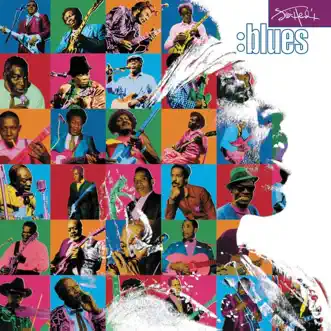About Blues by Jimi Hendrix Album
Recorded between 1966 and 1970, they feature the master guitarist stretching the boundaries of electric blues in both live and studio settings. Besides several Hendrixblues-based originals, it includes covers of Albert King and Muddy Waters classics, as well as a 1967 acoustic version of his composition “Hear My Train a Comin’.” - Richie Unterberger / Allmusic Guide (4/5 Stars) - Blues is a posthumous compilation album by musician Jimi Hendrix, released April 26, 1994, on MCA Records. The album contains eleven blues songs recorded by Hendrix between 1966 and 1970. Out of these eleven, six were previously unreleased. The tracks include seven of Hendrix’s compositions along with covers of famous blues songs such as “Born Under a Bad Sign” and “Mannish Boy”. Most of the album’s material consists of leftover studio tapes that Hendrix might have never intended to release. Compiled by MCA and released in 1994, Blues was met with favorable criticism and multiple chart success, selling over 500,000 copies in its first two years of release. On February 6, 2001, Blues was certified platinum in sales by the Recording Industry Association of America. The album was re-released on Experience Hendrix Records in 1998, following the Hendrix family’s acquisition of the musician’s recordings. Music The opening song “Hear My Train A-Comin’” (aka (by Hendrix) “Getting My Heart Back Together Again”)) is a Hendrix original that he often played live in concert, particularly in 1969 and 1970. The song was from a long lost master tape of Hendrix alone playing a 12 string acoustic right hand guitar, strung for left hand and singing in a delta blues manner. This live studio performance was filmed for, and included in the film See My Music Talking, and later included in the 1973 documentary Jimi Hendrix and accompanying soundtrack LP. The last song on Blues is a live version of “Hear My Train A-Comin’” recorded on May 30, 1970, at the Berkeley Community Theater that had previously been released on the posthumous Rainbow Bridge album in 1971. A different version of “Hear My Train A-Comin’” was included on the posthumous 1975 album Midnight Lightning and was considered somewhat controversial since producer Alan Douglas used session musicians to augment Hendrix’ guitar and Mitch Mitchell’s drums (overdubbing the bass guitar in the process). Another studio version from February 1969 was included on The Jimi Hendrix Experience box set in 2000. “Born Under a Bad Sign” is an instrumental jam of the Albert King number (performed by Band of Gypsys). “Red House” is the original (mono) take from the European version of Are You Experienced, but minus the outro chat (previously unavailable in USA & Canada). Another take (stereo) from a different session was released on the USA version of the 1969 compilation album Smash Hits. On this version Redding plays electric guitar tuned down to resemble a bass. “Catfish Blues” is from a Dutch TV show Hoepla. Hendrix uses the first two verses from Muddy Waters “Rollin’ Stone” (which is based on older versions usually with “Catfish” in the title) and the last verse is from Muddy’s “Still a Fool” itself based on “Roll and Tumble Blues” by Hambone Willie etc. “Voodoo Chile Blues” is another creation of Alan Douglas, recorded during the sessions that produced the finished track, “Voodoo Chile”, for the critically acclaimed Electric Ladyland album. This track is made up of two different takes of the song that were edited and joined together in order to come up with one consistent track. “Mannish Boy” is actually a hybrid of Muddy Waters’s “Mannish Boy” and Bo Diddley’s “I’m a Man”, it is a similar edited studio creation that combines several takes. “Once I Had a Woman” is a slightly longer edited version of Hendrix’s slow blues song. The band starts to jam during the second half of the long song and then a fade out follows. “Bleeding Heart” is a cover of the Elmore James number, performed here by Band of Gypsys. “Jelly 292″ is actually take 2 of the song “Jam 292″ (the name on the tape box) which appeared on the 1974 European only LP “Loose Ends”. It is an uptempo jam based on Duke Ellington’s “Dooji Wooji”. “Electric Church Red House” is a jam from TTG studios in 1968 featuring a group introduction by Hendrix (lifted from another, different jam at TTG) and Lee Michaels on organ. Musicians Jimi Hendrix – guitars, vocals Billy Cox – bass on “Born Under a Bad Sign”, “Mannish Boy”, “Once I Had a Woman”, “Bleeding Heart”, “Jelly 292″ and “Hear My Train a Comin’ (Electric)” Noel Redding – bass on “Red House”, “Catfish Blues” and “Electric Church Red House” Mitch Mitchell – drums on “Red House”, “Catfish Blues”, “Voodoo Chile Blues”, “Jelly 292″, “Electric Church Red House” and “Hear My Train a Comin’ (Electric)” Buddy Miles – drums on “Born Under a Bad Sign”, “Mannish Boy”, “Once I Had a Woman”, “Bleeding Heart” Jack Casady – bass on “Voodoo Chile Blues” Steve Winwood – organ on “Voodoo Chile Blues” Lee Michaels – organ on “Electric Church Red House” Sharon Layne – organ on “Jelly 292″ Additional personnel Alan Douglas – production Bruce Gary – production Mark Linett – engineering Joe Gastwirt – mastering Rob O’Connor – artwork, design Richard Bull – artwork, design Michael J. Fairchild – liner notes



